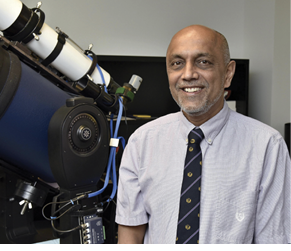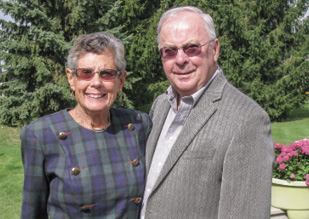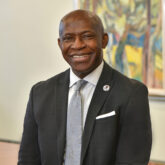Astrophysicist, Yale Professor Credits Oswego with Setting His Course for Stellar Career

Dr. Earl Bellinger ’12
Earl Bellinger ’12 is one stellar guy.
A quick review of his personal website details Bellinger’s many accomplishments, including 51 publications and 624 citations of his work, as well as his work as a postdoctoral research fellow at the prestigious Max Planck Institute for Astrophysics in Germany, a developer of the Modules for Experiments in Stellar Astrophysics (MESA) stellar evolution code and past teaching position at Aarhus University in Denmark. In January 2024, he joined Yale University as assistant professor in the Department of Astronomy. His research interests focus primarily on understanding the evolution of stars through the observation of their pulsations.
“These observations allow us to determine the ages and other properties of stars with unprecedented precision, which is driving a revolution throughout astrophysics,” he said.
Bellinger started out as a computer science student here at Oswego, but spent a great amount of his time working with astronomy professor Shashi Kanbur.
“I only became seriously interested in astronomy after meeting Shashi Kanbur,” Bellinger said. “He brought me to Brazil for two summers as a part of the SUNY Oswego Global Laboratory, which was funded by grants he had won from the National Science Foundation.”
Bellinger recounted the amazement he felt seeing the stars in the Brazil sky, away from light pollution. It was then that his passion was born. Bellinger said that before stars, his first love was actually programming.
“I was not particularly interested in telescopes when I was young. I was much more interested in computers and philosophy,” Bellinger said. “I started programming already when I was a child, probably around the age of 8 or so, and that has remained both my greatest hobby and professional asset.”
Bellinger graduated from Oswego as an applied mathematics and computer science double major with concentrations in artificial intelligence and scientific computing. He earned a master’s degree in computer science at Indiana University, and a Ph.D. at the University of Goettingen in Germany.
He did a postdoctoral research fellowship at the Stellar Astrophysics Centre in Denmark before acquiring a research position at the Max Planck Institute for Astrophysics.
“Oswego had a profound impact on my course through life,” he said. “I started working on variable star research as a freshman at Oswego under the guidance of Professor Shashi Kanbur, and I continue to work with him to this day.”
When he’s not occupied with the stars, Bellinger enjoys playing music in his free time. He can play the guitar, bass and drums, to name a few of his favorite instruments. But there is a connection between stars and music, too, Bellinger said.
“Many pulsations we see in stars are actually acoustic oscillations — i.e., sound waves,” he said. “Stars are making music! We can see their oscillations in the starlight we receive from them, and we can sonify them so that we can hear their sounds. The way we analyze stellar data also has very deep parallels with the way we analyze music.”
You might also like
More from Alumni Profiles
BHI Alumnus from Liberia Gains World of Experience
BHI Alumnus from Liberia Gains World of Experience Otis Gbala M’23 became the first SUNY Oswego graduate who studied from Liberia …
Couple’s Loyal Support for Oswego Spans Five Decades
Couple’s Loyal Support for Oswego Spans Five Decades Marilynn “Lynn” Nagy Farrar ’61 and Neil Farrar cherish their memories of Oswego …
Envisioning Her Legacy
Envisioning Her Legacy Dr. Yvonne Spicer ’84 M’85 has been the first many times in her life. She was among the …













